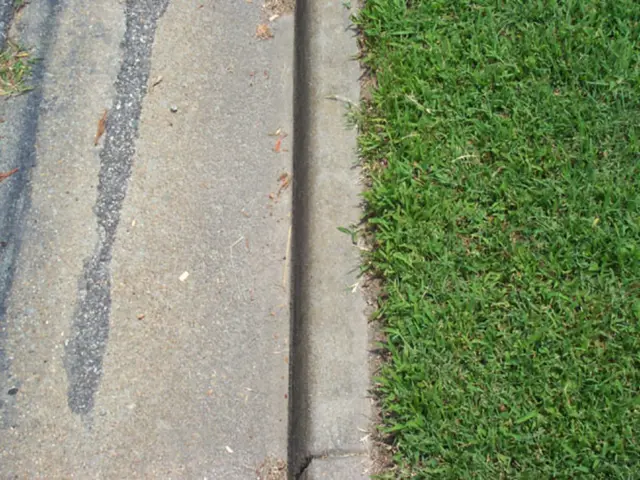Sunscreen's protection factor: A closer look
Sun-Proof Fun: Unraveling the Sunscreen Maze, 7 Essential Sunscreen Qs
Facebook Twitter WhatsApp Email Print Copy Link
Spending time under the sun can be a joy for the spirit, but it's a peril for the skin if we aren't vigilant. Sunscreen becomes our essential ally in this battle against UV radiation. But with so many options, from lotions to sprays, what should we look for when we hit the sunscreen aisle? Two experts uncover the answers.
Just taking a peek at aisle "sun protection" at your local grocery or pharmacy is enough to make your head spin. With numerous creams, sprays, and gels, boasting high and low Sun Protection Factors (SPF) and labeled for children or adults, it's a bewildering maze.
How can you find the right product to shield yourself from UV radiation during spring and summer? And what are the most common mistakes when applying sunscreen? Let’s dive in and decipher the seven most important questions.
1. What's the deal with Sun Protection Factor (SPF)?
Every sunscreen product flaunts an SPF number, ranging from 6 to 50+. The higher the SPF, the longer the cream or spray safeguards your skin from sunburn and UV-triggered damage.
The starting point is your skin's natural protective capacity, which varies greatly according to your skin type. For instance, very fair skin types with blonde or red hair can only endure a few minutes in direct sunlight before burning. At the other end of the spectrum, very dark skin types with black hair can withstand an hour or more.
Enter Sunscreen, and its accompanying SPF: If you multiply your skin's natural protection time by the SPF, you get your sun protection window. For example, someone with fair skin who applies an SPF 50 sunscreen could theoretically spend 250 minutes in the sun - in theory.
However, sunscreen isn't a free pass to prolonged sunbathing. Sunscreens, even those with high SPF, don't provide complete protection from UV radiation as per the Federal Office for Radiation Protection (BfS). "The theoretical protection duration based on the SPF should not be surpassed by more than 60%," the authority advises.
2. Which sunscreen is right for me?
Alongside your skin type and the ensuing SPF, other factors play a crucial role in choosing the perfect sunscreen.
"For instance, whether you have dry skin and need richer creams, or prefer a lighter gel or spray," explains Silke Hofmann, a spokesperson for the German Dermatological Society (DDG). Athletes may want to consider a sunscreen that doesn't stream into their eyes when they sweat. Fear not; sunscreens for that purpose exist too.
Remember: it's essential to pick a sunscreen that suits your needs. "After all, the product might be great, but if you don't like it, you won't use it," points out dermatologist Marion Moers-Carpi.
3. On which days is sun protection particularly important?
The season, latitude, time of day, and cloud cover – many variables dictate just how harmful sunlight is to your skin. Keep in mind: on a slightly overcast day, UV radiation can sometimes be higher than on a clear day.
The UV Index, which ranges from 1 to 11+, can provide guidance. It's available in virtually every common weather app. The Federal Office for Radiation Protection (BfS) suggests protecting your eyes and skin from the sun at an index of 3. At an index of 8, it's advisable to avoid being outside during peak hours.
4. How do I apply sunscreen correctly?
Sunscreen is crucial in protecting yourself from the sun. A hat can also help.
There are oft-forgotten areas like ears, lips, hands, neck, and the spaces between skin and clothes, says Silke Hofmann. "People with little or no hair often neglect to cream their head or wear a hat, and you can easily get sunburn in the spaces between your toes and fingers," adds Marion Moers-Carpi.
For maximum efficiency, she advises pre-hydrating your skin first. "Apply a body lotion or skin cream without SPF that provides moisture. Let it soak in, then apply sunscreen," recommends Moers-Carpi.
5. How much sunscreen do I need to be well protected?
People tend to apply too little sunscreen, observes Silke Hofmann.
According to the German Cancer Society, 2 milligrams of sunscreen per square centimeter of skin is ideal. If you can't visualize that, an adult would need about one-fifth of a 200-milliliter bottle to thoroughly protect their entire body.
Moers-Carpi offers a rule of thumb: two handfuls (from the knuckle to the tip) of sunscreen per body region – for one leg, one arm, or the face.
And when is it best to apply sunscreen? “Morning is the best time – about 30 minutes before going outside – but reapply as necessary." Silke Hofmann suggests applying it twice as a minimum protection, and if you're sweating, exercising, or swimming, you should reapply multiple times a day.
6. What about children?
Unlike adults, babies and young children don't possess any inherent skin protection. Therefore, they require special sun protection.
Parents should pay attention to the type of UV filter. Children benefit most from physical (mineral) sunscreens like titanium dioxide or zinc oxide, which are less likely to cause skin irritation, as stated by Moers-Carpi.
Children's skin is particularly sensitive to the sun. High SPF sunscreens are recommended for them. It might be advantageous to use special children's sunscreens, suggests Silke Hofmann: "Children's sunscreens usually avoid fragrance and preservative ingredients that could heighten the risk of allergies."
7. How long is sunscreen good for?
Sunscreens from last year should be discarded, right? Well, sort of. If the sunscreen hasn't been opened and has simply lived in a cabinet, it can still be used.
After opening, sunscreens are typically good for 12 months, which is often indicated on the packaging with a symbol of an open jar and the month it expires.
If the symbol of an open sun cream jar with a number is printed on the sunscreen tube, it means: this product can safely be used for twelve months after opening.
The aroma and consistency of the cream can also indicate whether it's still safe to use on your skin. "If it smells musty or the oil and water have separated, discard it," suggests Silke Hofmann. If the sunscreen has been exposed to extreme heat, it should be discarded.
Source: ntv.de, awi/dpa
- According to the science of health-and-wellness and skin-care, the higher the Sun Protection Factor (SPF) of a sunscreen, the more protection it offers against UV radiation and sunburn, with SPF numbers ranging from 6 to 50+.
- When selecting a sunscreen, it's essential to consider factors such as your skin type, necessary texture (cream, gel, or spray), and athletic needs (to prevent streaming into eyes during sweating).
- The UV Index, ranging from 1 to 11+, can provide guidance on the potential harm of sunlight; the Federal Office for Radiation Protection suggests protecting your eyes and skin from the sun at an index of 3, and avoiding being outside during peak hours at an index of 8.
- Correct sunscreen application is key. Forgettable areas include ears, lips, hands, neck, and spaces between skin and clothes. Pre-hydrating your skin with a lotion or cream without SPF can help improve sunscreen effectiveness.
- Adequate sunscreen application covers 2 milligrams per square centimeter of skin, which requires an average of one-fifth of a 200-milliliter bottle to thoroughly protect an adult. Reapplication is necessary during sweating, exercising, and swimming, twice or more per day.
- For children, whose inherent skin protection is minimal, it's recommended to use physical (mineral) sunscreens like titanium dioxide or zinc oxide, which are less likely to cause skin irritation. Children should use high SPF sunscreens, and fragrance- and preservative-free children's sunscreens are often beneficial to reduce the risk of allergies.
- Sunscreen shelf life varies. Unopened sunscreens can be used beyond their listed expiration dates, but opened products are typically good for 12 months, though this may be indicated on the packaging with an open jar symbol and month expiration. Sunscreen that smells musty, or has oil and water separated, should be discarded. If sunscreen has been exposed to extreme heat, it should also be discarded.








